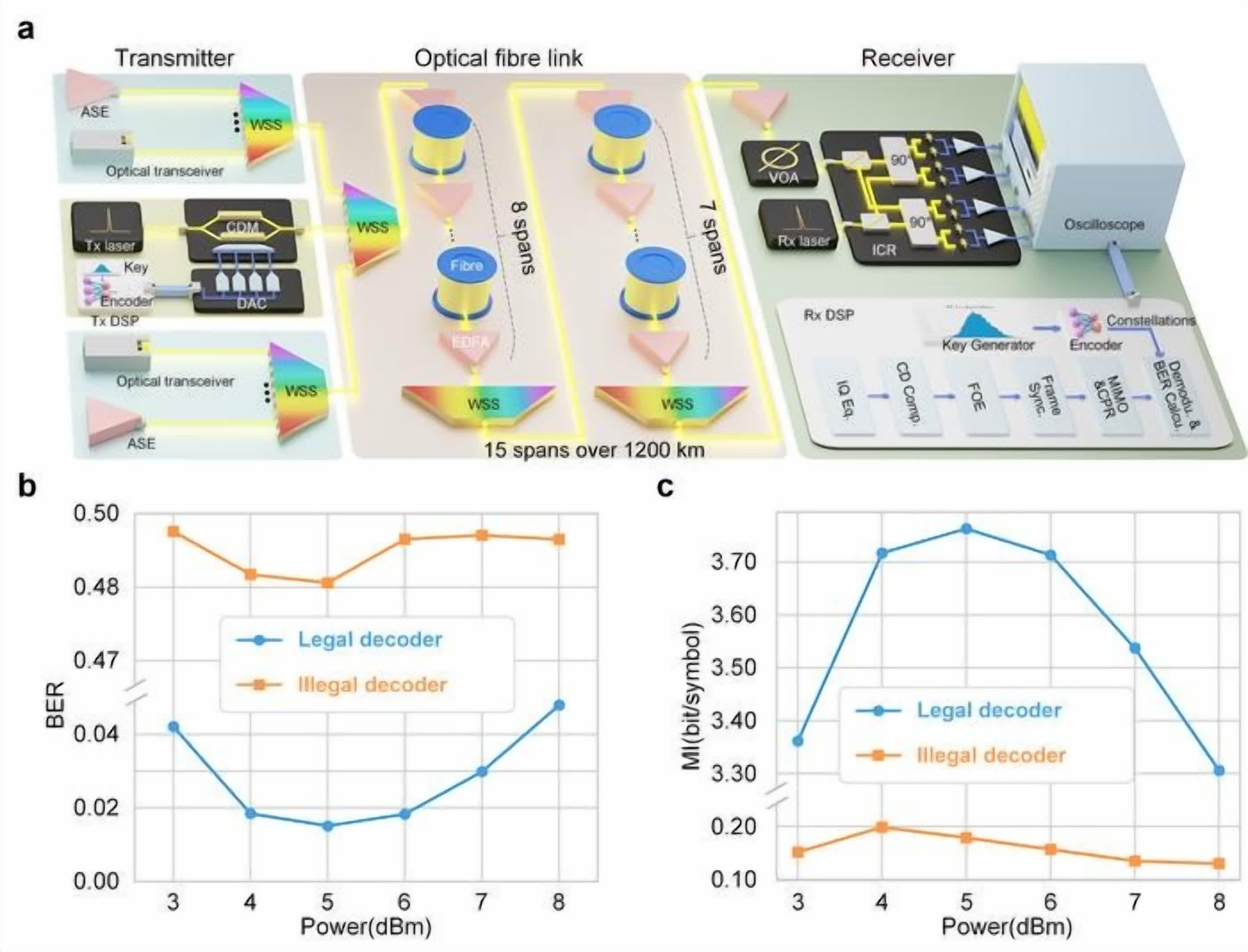Why it matters: Chinese researchers hit a significant data-transfer milestone by transmitting data at one terabit per second over 1,200 kilometers of optical fiber, with encryption embedded directly into the light signal. This approach eliminates any added layers of software-based security – something the global telecom industry has struggled to achieve for years.

The breakthrough – developed by Professor Lilin Yi at Shanghai Jiao Tong University – is called the Integrated Encryption and Communication (IEAC) system. Unlike traditional methods such as TLS or IPsec, which apply software-level security while leaving the optical signal exposed, IEAC redefines how security operates within fiber networks. Rather than securing the message, it encrypts the signal itself – the light – making eavesdropping virtually impossible.
It achieves this using an optimized artificial intelligence technique called geometric constellation shaping (GCS). High-speed random number generators create a unique light pattern for each data burst. The system treats every transmission like a constantly shifting optical fingerprint. As a result, the signal becomes nearly impossible to decode without the exact matching pattern. To any interceptor, the data appears indistinguishable from static.

In testing, the researchers passed the signal through a fiber loop, simulating conditions such as dispersion, nonlinearities, and optical noise. They tested it across 26 channels on the full 3.9 THz C-band, each carrying dual-polarization 32 GBd signals. The result was a net data rate of 1 Tbps and a bit error rate under 2×10⁻² – commercial-grade speed paired with near-military-grade security.
Beyond its blistering data rates, another compelling aspect of IEAC is its compatibility with existing infrastructure. Unlike quantum key distribution (QKD) or chaotic encryption systems that require specialized equipment, IEAC can piggyback on standard optical hardware. In many cases, deploying the system could be as simple as a firmware upgrade. This compatibility should provide a significant advantage for cash-strapped operators or countries seeking to secure national communications without overhauling their entire network.
"Our work bridges the gap between security and transmission performance in optical communications," Yi said. "By embedding encryption into the physical layer, IEAC paves the way for secure, high-throughput networks capable of supporting AI-driven data demands."
Professor Yi and his team hope the IEAC framework's scalability and compatibility with today's optical infrastructure will make it a game changer for global data centers, cloud platforms, and upcoming 6G networks.
Researchers achieve 1 Tbps secure data transmission over 1,200 km